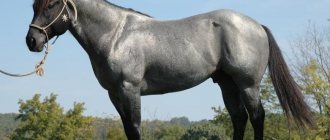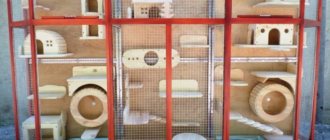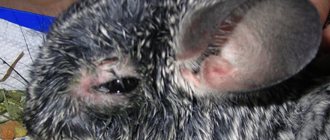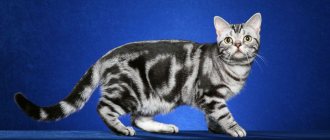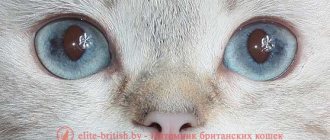Description of chinchilla
The chinchilla's appearance makes it look like a large squirrel. These animals have very soft fur, large eyes and ears.
The chinchilla has a long tail (up to 17 centimeters). The hind limbs are longer than the front limbs and have a different number of fingers (on the hind limbs - 4, on the front - 5).
Chinchillas' teeth (20 of them) grow throughout their lives, so pets are noticed that they are constantly gnawing on something.
White velvet
Chinchillas of this color are identical in care and living needs to White Wilson. This color appears when crossing White Wilsons and Velvets. The color is considered very sophisticated.
Chinchilla color White velvet
White velvet is similar to white, but has the characteristic characteristics of velvet. These signs are diagonal stripes on the paws, a darkish color of the muzzle, wider paws, and the ears are dark gray or even black. The eyes are black. Sometimes there are dark spots on the white fur.
The animal's spots add unique sophistication; they have different shapes and are most often darkened.
As a rule, they are crossed with beige or homobeige individuals.
Varieties of chinchillas
There are short-tailed and long-tailed chinchilla breeds. The first are very rare, since it was their fur that was most valued and they were almost completely exterminated.
Long-tailed individuals form in small groups and coexist successfully in the wild.
Character of chinchillas
Chinchillas have a very affectionate character. They gladly go into a person's arms and rarely attack. Most often, chinchilla bites are provoked by severe fright of the animal.
If you decide to buy a chinchilla as a pet, then during the first week you should leave it alone and give it time to get used to its new place of residence.
Creating a trusting relationship with your pet can begin with giving treats. If the chinchilla is ready to interact, then it will approach itself. Patience is important here.
However, despite its pride, at home the chinchilla is afraid of loneliness and can be very offended by the owner for a long separation.
Keeping and caring for a chinchilla at home
Chinchillas are finicky rodents that require proper care and certain living conditions. In these cases, they take root well at home and do not lose their ability to reproduce.
Such decorative individuals require:
- A spacious cage, the size of which should not be less than 40 cm in width and 50 cm in height. The most comfortable cage size for one rodent is considered to be 60*50*90 (length, width and height).
- 24/7 access to food and clean water.
- Constantly maintaining the temperature within 18-24 degrees Celsius. Since their origin comes from regions characterized by a harsh climate, temperatures above 25 degrees Celsius are considered deadly for animals. If the room is hot, veterinarians recommend: installing air conditioning;
- take 1-2 bottles of water and put them in the freezer for 1-1.5 hours, and then place them next to the cage;
- cover the windows with thick curtains if the sun's rays heat the room.
On cool and sunny days, you can take the cage out onto the balcony so that the animals can sunbathe.
For the full development of chinchillas, constant care is important, including:
- Maintaining a proper diet.
- Regular cage cleaning.
- Walks. Rodents need to periodically walk around the house or apartment. However, letting them go freely is quite a dangerous activity, since the animals can damage furniture or gnaw wires. It is better to purchase a special ball for these purposes, which allows you to move safely indoors.
- Bathing. Conducted 1-2 times a week. Animals cannot be washed in water, but sand baths are a must for them. To do this, pour river or sea sand into a container measuring 30*30 centimeters and place it in a cage. The main thing is that the chinchilla does not stay in the bath for more than 30 minutes, otherwise their fur will not be so fluffy.
Neglecting any of the rules for maintenance and care can lead to the death of the animal or make it susceptible to various diseases.
Cage equipment: how to keep it clean?
A special role is assigned to the cell. If it is insufficiently equipped or not kept clean, then chinchillas feel unsafe, become passive and begin to get sick.
For such rodents, it is important that the cage is equipped with:
- At least 2-3 shelves for jumping.
- Hanging drinker and feeder. It is optimal to select metal drinkers and feeders so that the animal cannot chew them.
- A retractable tray that allows you to remove old litter and add new filler at any time.
- A small house where the animal can rest or hide.
- Small stones for sharpening teeth.
- Toys, such as wooden blocks.
When the female gives birth, it is important to make a special fenced area in the cage in which the rodent can safely feed the babies.
To keep your pet healthy, you need to clean his cage regularly. In this matter it is recommended:
- Remove food debris daily, change bedding, and thoroughly wash all water or food bowls.
- Wash and disinfect the entire cage once a week, and if necessary, replace wooden toys with new ones.
During general cleaning, the chinchilla is transplanted into another cage and returned when the first one is completely dry.
Diet and diet
A nutritious diet and a properly structured diet are important for any animal. Every day a rodent needs:
- Feed in the amount of 2 tablespoons. It should make up at least 70% of the total diet. There are many names of food for chinchillas; before choosing food, you should consult a veterinarian.
- Hay (1 teaspoon), which ensures normal functioning of the gastrointestinal tract.
- Cereals (1 teaspoon), which give energy to your pet.
- Chalk (2-3 grams), replenishes the body's mineral reserves.
- Treats comprising up to 10% of the daily diet. You can treat your animal to the following foods:
- green apples;
- plums;
- raisin.
All chinchilla food must meet the following specifications:
- be fresh;
- do not contain salts, preservatives or spices;
- be low in calories, otherwise the animal may become obese and develop problems with the cardiovascular system.
You need to place food in the feeders every day, and it is better to do this in the evening.
